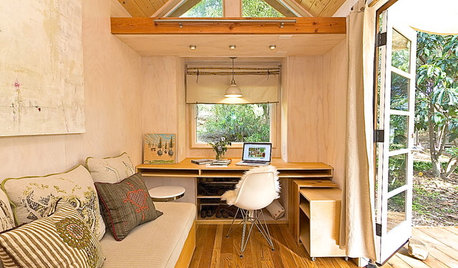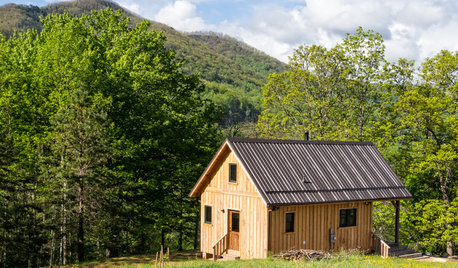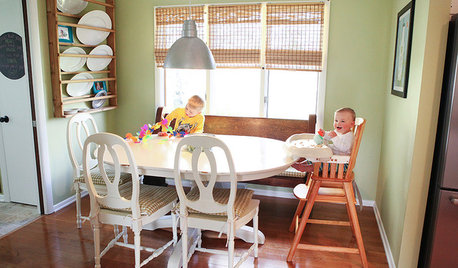One woman, seven acres
briannaorg
10 years ago
Featured Answer
Sort by:Oldest
Comments (23)
cole_robbie
10 years agolast modified: 9 years agoRelated Professionals
Cottonwood Landscape Architects & Landscape Designers · Saint Charles Landscape Architects & Landscape Designers · Arlington Landscape Contractors · Peabody Landscape Contractors · Broomfield Landscape Contractors · Concord Landscape Contractors · Estelle Landscape Contractors · Fairfield Landscape Contractors · Laguna Hills Landscape Contractors · Milton Landscape Contractors · Oak Forest Landscape Contractors · Wentzville Landscape Contractors · Carson Solar Energy Systems · Melville Solar Energy Systems · Easton Solar Energy Systemslazy_gardens
10 years agolast modified: 9 years agorandy41_1
10 years agolast modified: 9 years agobriannaorg
10 years agolast modified: 9 years agomyfamilysfarm
10 years agolast modified: 9 years agojrslick (North Central Kansas, Zone 5B)
10 years agolast modified: 9 years agobrookw_gw
10 years agolast modified: 9 years agobrgcuvi
10 years agolast modified: 9 years agodirtdigging101
10 years agolast modified: 9 years agoboulderbelt
10 years agolast modified: 9 years agomyfamilysfarm
10 years agolast modified: 9 years agocole_robbie
10 years agolast modified: 9 years agomyfamilysfarm
10 years agolast modified: 9 years agorandy41_1
10 years agolast modified: 9 years agobriannaorg
10 years agolast modified: 9 years agodirtdigging101
10 years agolast modified: 9 years agorandy41_1
10 years agolast modified: 9 years agoSlimy_Okra
10 years agolast modified: 9 years agoOnionShedFarms
9 years agolast modified: 9 years agobriannaorg
9 years agolast modified: 9 years agolazy_gardens
9 years agolast modified: 9 years agoEmbothrium
9 years agolast modified: 9 years ago
Related Stories

TINY HOUSESHouzz TV: Step Inside One Woman’s 140-Square-Foot Dream Home
You may have seen the story on Houzz — now check out the video tour of Vina Lustado’s warm and welcoming tiny house
Full Story
GARDENING FOR BIRDSWild Birds Transform a Woman’s Garden and Life
How Sharon Sorenson created a wildlife haven and became the Bird Lady of Southern Indiana
Full Story
HOUZZ TOURSHouzz Tour: 10 Acres, 3 Generations and Many Animals in North Carolina
Check out a throwback-style cabin that celebrates simplicity, reclaimed materials and family
Full Story
REMODELING GUIDESOne Guy Found a $175,000 Comic in His Wall. What Has Your Home Hidden?
Have you found a treasure, large or small, when remodeling your house? We want to see it!
Full Story
DREAM SPACESIf You Could Choose One Dream Space ...
Yoga room, wine cellar, infinity pool or tricked-out garage — which of these luxurious rooms would be at the top of your list?
Full Story
MOVINGSaying Goodbye to One Home and Hello to Another
Honor your past and embrace your future with these ideas for easing the transition during a move
Full Story
HOUZZ TOURSHouzz Tour: Innovative Home Reunites Generations Under One Roof
Parents build a bright and sunny modern house where they can age in place alongside their 3 grown children and significant others
Full Story
FARM YOUR YARDHouzz Call: Show Us Your One-of-a-Kind Chicken Coops
Do you have a fun or stylish backyard shelter for your feathered friends? Post your pictures and stories in the Comments!
Full Story
FUN HOUZZWhat You Do When There’s No One Around
Ice cream binges, air guitar concerts, napping in the closet. Houzzers worldwide disclose their quirky secret indulgences
Full Story
LIFE10 Ways to Work Through Grief Triggers During the Holidays
A year after losing her sister, she was facing another holiday. Here’s how one woman learned to find joy again
Full Story





myfamilysfarm